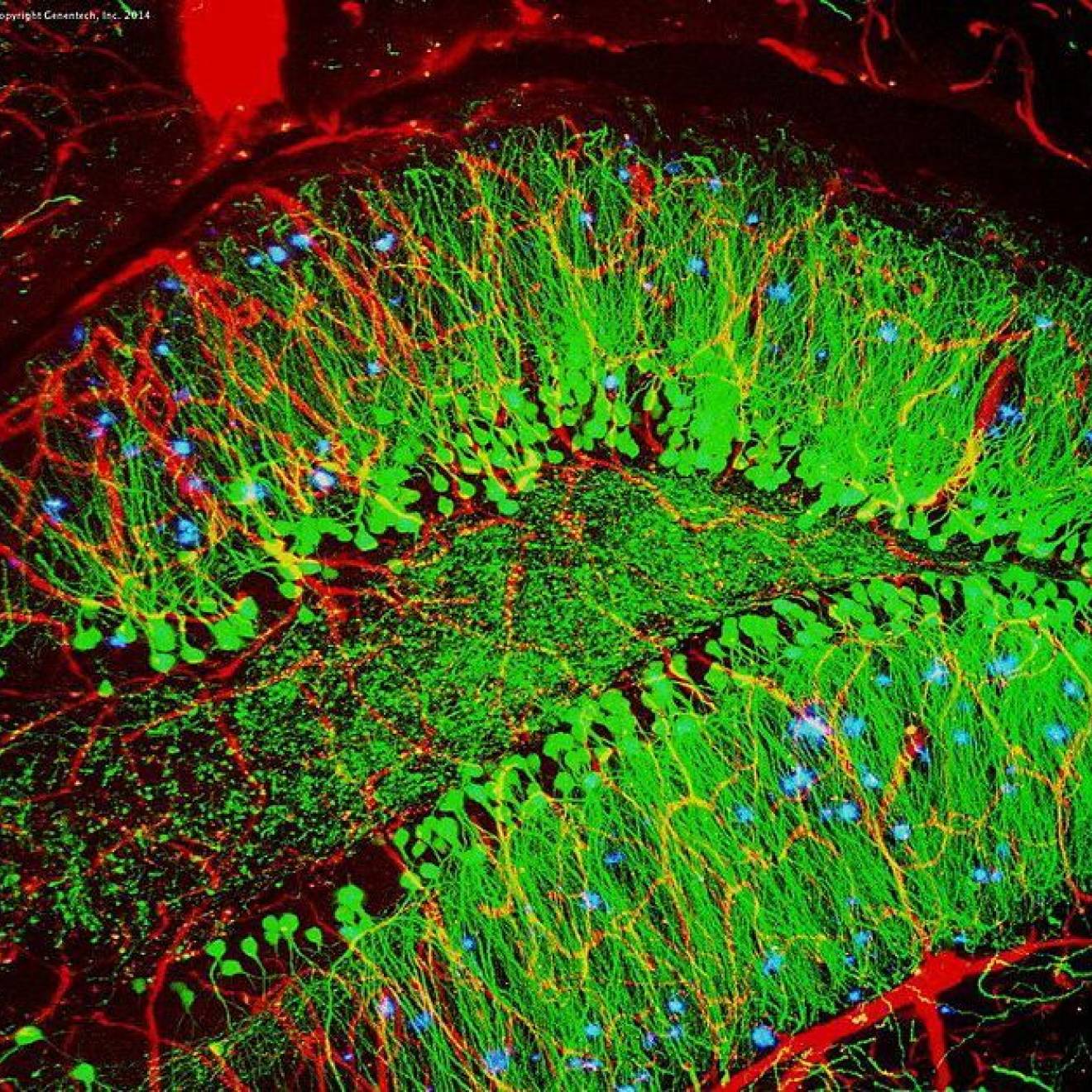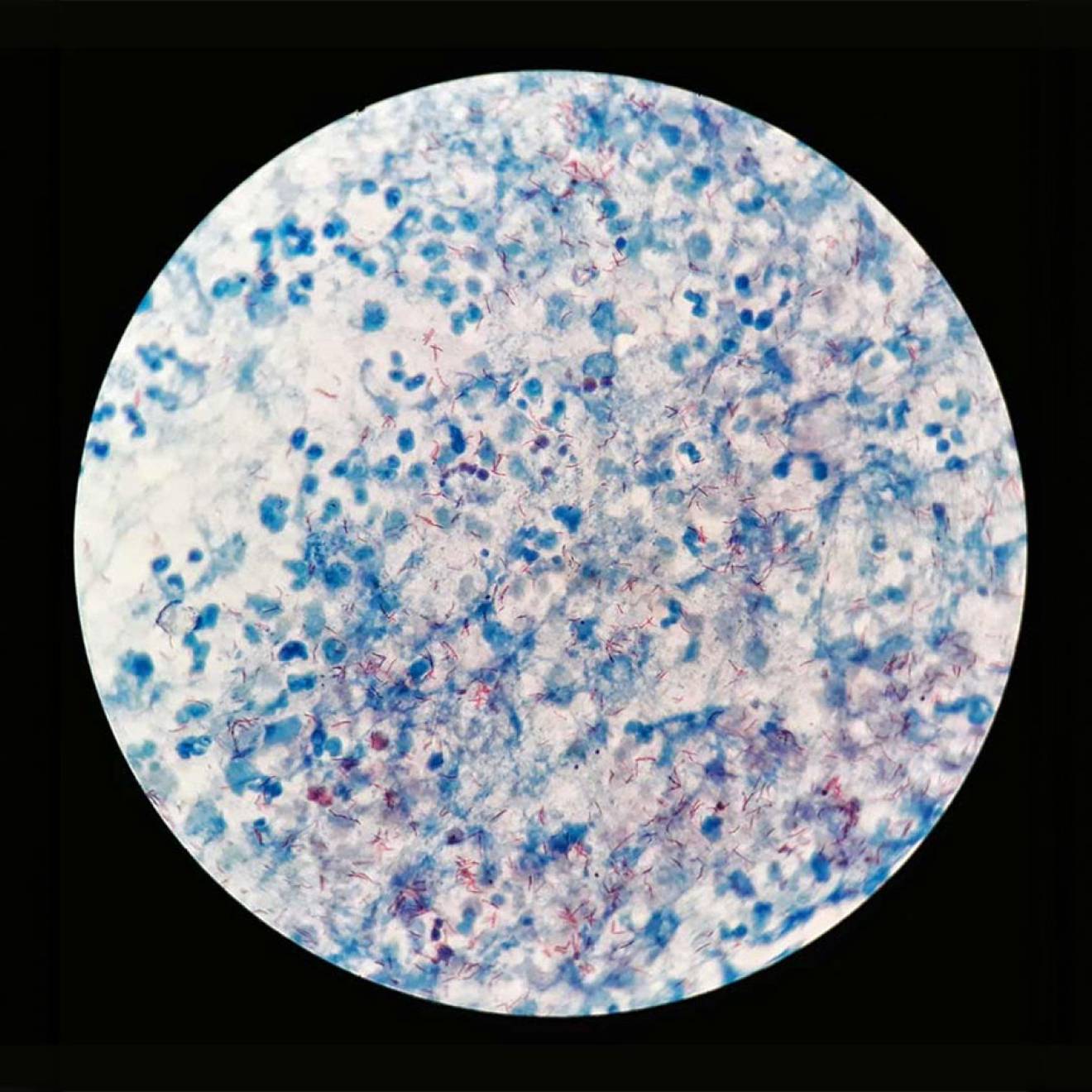Robert Sanders, UC Berkeley
Two state-of-the-art research areas — nanotech and optogenetics — were the dominant theme as six researchers from UC Berkeley, UC San Francisco and Lawrence Berkeley National Laboratory sketched out their teams’ bold plans to jump-start new brain research.
The rapid-fire talks last Thursday (Sept. 18) kicked off a one-of-a-kind collaboration among the three institutions in which each put up $1.5 million over three years to seed innovative but risky research. Called BRAINseed, the partnership could yield discoveries that accelerate President Barack Obama’s national BRAIN (Brain Research through Advancing Innovative Neurotechnologies) Initiative and California’s own Cal-BRAIN Initiative.
“It’s clear to everybody that any attempt to understand how the brain works, or ultimately what we might mean by cognition, is so daunting and so large that no one institution could hope to be a stand-alone leader in such an effort,” said Graham Fleming, UC Berkeley vice chancellor for research. “The synergies between UCSF, Lawrence Berkeley National Lab and UC Berkeley are very strong, and we complement one another in very effective ways.”
“This tri-partnership is unprecedented in the history of our institutions,” noted Horst Simon, deputy director of Berkeley Lab. “We are putting money down to fund a real collaboration that makes people sit down together and address some of the most challenging questions today.”
“BRAINseed underscores the tremendous power embodied in the institutions in the Bay Area, and the potential for amazing things to happen if we can overcome the geographical separations,” said Keith Yamamoto, UCSF vice chancellor for research.
Funding for brain research
When Obama announced the federal BRAIN Initiative in April 2013, he allocated $110 million for fiscal year 2014. This funding is already supporting several projects at UC Berkeley. Obama has proposed even more funding in future years “to revolutionize our understanding of the human mind and uncover new ways to treat, prevent, and cure brain disorders like Alzheimer’s, schizophrenia, autism, epilepsy and traumatic brain injury.”
Similarly, Cal-BRAIN — short for California Blueprint for Research to Advance Innovations in Neuroscience — aims to “accelerate the development of brain mapping techniques, including the development of new technologies.” The initial appropriation in this year’s state budget was $2 million.
Both Cal-BRAIN and the national initiative are expected to spur new startups in the area of neurotechnology based on the tools and inventions created in research labs. The innovations developed through these initiatives could have broad applications in disease monitoring beyond the brain and even outside the health care field.
“What we want to do is build a climate of collaboration so that we are stronger competitors in the national brain program and Cal-BRAIN,” Fleming said. “We see BRAINseed as a model for future collaborations (among the three institutions).”
Probing deeper into the brain
The six winning projects of 17 proposals originally submitted focus on new methods of mapping the brain and studying neurons deeper in the brain than ever before.
Fiberless deep brain imaging: Using novel nanocrystals developed by Bruce Cohen at Lawrence Berkeley National Laboratory, and biosensing and bioactuating molecules synthesized by Chris Chang and Ehud Isacoff at UC Berkeley, researchers hope to probe cell-to-cell communication deeper in the brain than ever before. The technique takes advantage of the fact that near infrared (NIR) light with its shorter wavelengths penetrates deeper into the brain than does visible light. The nanocrystals from Cohen’s lab absorb the NIR light and convert it into visible light. The visible light can then trigger optogenetic photoswitches that turn neuron receptors on and off, as well as activate biosensors that record the release of neurotransmitters at the synapse. Coupled with techniques developed by Charly Craik and Robert Edwards at UCSF for targeting probes to specific cells, the researchers on this project hope to be able to study cell signaling in the many layers of the cortex.
Integrated nanosystems: Our senses of touch and hearing, as well as our ability to feel pain and detect the position of our body in space, are all made possible by a special class of proteins known as mechanoreceptors. Scientists studying this system in cell culture have traditionally used micropipettes to apply pressure to mechanoreceptors, while microelectrodes record the resulting neural activity. But small as they are, these devices are much too bulky to precisely stimulate single receptors or make accurate neural recordings. A team led by UCSF’s Young-wook Jun is devising a system to overcome these limitations. In the new setup, magnetic nanoparticles controlled by micromagnetic “tweezers” will have the capacity to stimulate individual mechanoreceptors, and high-resolution optical signals emitted by “quantum dots,” developed in the lab of Paul Alivisatos of UC Berkeley and Berkeley Lab, will offer a truer picture of neural activity in sensory neurons. They will collaborate with UCSF’s Yuh Nung Jan.
In vivo optogenetic mechanisms: We think of the action of neurotransmitters as rapid and localized, but the effects of acetylcholine (ACh) in the brain are actually quite diffuse and unfold slowly. The hormone-like characteristics of ACh make it difficult to understand through conventional neurophysiology experiments. As a result, ACh transmission, which plays a role in Alzheimer’s and Parkinson’s diseases and in addiction, is poorly understood despite decades of study. UC Berkeley’s Richard Kramer has devised a system that enables researchers to use light to switch ACh receptors on and off in animals. Using this system, Kramer and UCSF’s Michael P. Stryker will be able to study how ACh modulates behavior in a wholly new way.
Acousto-optic virtual waveguides: Optogenetics approaches to probe the brain’s grey matter, or cortex, work only as deep as the light can penetrate, typically only a fraction of a millimeter below the surface. UC Berkeley engineers have developed a novel way to channel light deeper – more than a millimeter deep – to probe cell-to-cell signaling. Engineer Michel Maharbiz proposes to use ultrasound to create ‘waveguides’ that can steer light below the surface of the cortex, stimulating photoswitches that enable the study of neurotransmitters. With light-sensitive probes developed at Berkeley Lab and cell-imaging techniques from UCSF, the technology would open new avenues for non-invasive in-vivo imaging and stimulation of local brain areas. Maharbiz’s collaborators are Jim Schuck of Berkeley Lab, Reza Alam of UC Berkeley and Vikaas Singh Sohal of UCSF.
Optical integrators of neuronal activity: One of the greatest challenges in understanding the brain is connecting what happens over large volumes and hundreds of thousands of neurons to the signals transmitted at the individual synapse, the connection between nerve cells where communication takes place. Because calcium is key to neuronal signaling, a team led by Evan Miller, UC Berkeley assistant professor of molecular and cell biology and of chemistry, plans to use probes developed in his lab that ‘remember’ calcium concentration. Along with co-collaborators Pam den Besten and Terumi Kohwi-Shigematsu at UCSF and Berkeley Lab, respectively, Miller plans to investigate neuronal activity in models of disease. They can then correlate this with what happens over a larger volume of the brain. The technique combines “click chemistry” pioneered at UC Berkeley with probes generated in the Department of Chemistry to integrate images over different scales. This technique is a vital first step in developing tools that remember neuronal activity and enable 3D reconstruction of activity across entire brain regions with cellular resolution.
Development of instrumentation and computational methods: Though great progress has been made in mapping the function of the human brain, researchers have been stymied by limitations in both recording devices and the ability to analyze and understand brain signals. UCSF’s Edward F. Chang, M.D., is leading a team that aims to achieve up to a thousandfold increase in the density and electronic sophistication of recording arrays. The vast amount of data collected by these arrays will be stored and analyzed by some of the world’s most powerful computers at the National Energy Research Scientific Computing Center (NERSC), enabling a new level of understanding of the brain in both health and disease. Chang’s collaborators are Peter Denes and Kristofer Bouchard of Berkeley Lab and Fritz Sommer of UC Berkeley.

